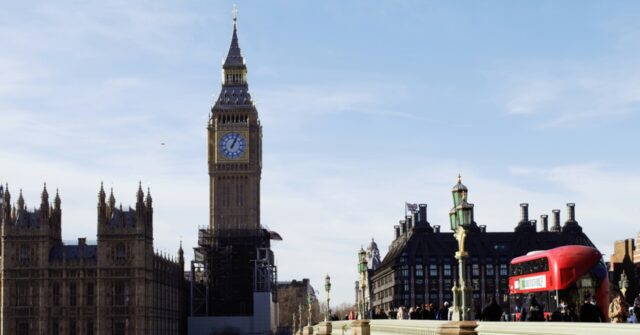A recent altercation on Westminster Bridge in London left a man in critical condition after experiencing a cardiac arrest. The incident unfolded on a Sunday morning around 10:45 am, prompting a swift response from the Metropolitan Police, who were alerted to a fight in progress. Upon arrival, emergency services transported the man to a nearby hospital, where he was reported to be “fighting for his life.” Despite initial claims suggesting that the man had sustained stab wounds, the Metropolitan Police later clarified that there was no evidence of a stabbing, and investigations are currently focused on the details surrounding the cardiac event.
The authorities are treating the confrontation, which occurred mere steps from the British Parliament, as an isolated incident. Importantly, they have indicated that the situation is not being investigated as terrorism-related, alleviating fears of broader public safety concerns. As further details emerge, detectives are piecing together the circumstances that led to the man’s severe medical emergency. The focus remains on obtaining witness statements and other evidence to clarify the sequence of events that transpired during the fight.
In connection with this incident, the police have arrested four individuals, with three facing suspicion of attempted murder and one being charged with affray. The unfolding drama did not leave those involved unscathed, as reports reveal that two of the arrested individuals required hospitalization for minor facial injuries sustained during the altercation. This aspect of the incident highlights the often chaotic nature of street fights and the risks involved for all parties.
The incident has sparked renewed criticism of London Mayor Sadiq Khan, particularly regarding his approach to addressing crime in the capital. Concerns regarding public safety have intensified, leading many to question whether the city is becoming an increasingly dangerous environment. Reform UK Member of Parliament Rupert Lowe voiced his discontent, stating that London has reached a point where various violent crimes, such as stabbings and thefts, are becoming alarmingly normalized. His comments resonate with a growing sentiment among residents who are demanding more decisive action to ensure their safety.
This critical view of the city’s governance appears to be echoed by a broader audience, with members of the public expressing frustrations about the perceived decline of safety in urban areas. Calls for stronger measures to combat crime are increasingly common, as citizens grapple with the emotional toll of living in a city where violent incidents are becoming more frequent. The dialogue surrounding public safety and the effectiveness of current policies is becoming an essential part of the conversation concerning London’s governance.
As investigations continue and the man’s condition remains critical, the ramifications of this incident on public perception and policy response will likely be significant. The dynamic of safety, crime, and governance in London is under scrutiny, raising important questions about how officials will respond to growing concerns. Ensuring the well-being of residents and restoring a sense of security in the capital may require a critical reassessment of existing strategies in combating crime and addressing the community’s fears.

